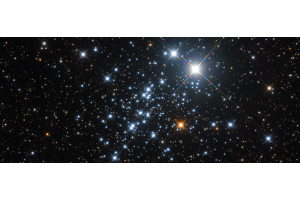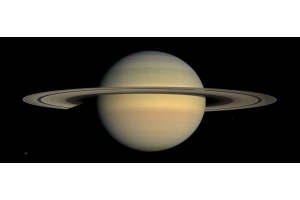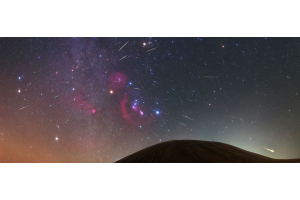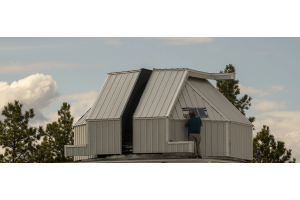spring sky
Spring brings new life to the night sky. As winter bids farewell and daylight extends its stay, the springtime sky hosts a spectacular display captivating seasoned astronomers and stargazing enthusiasts alike. With fresh constellations emerging and celestial events unfolding, it's a cosmic spectacle not to be missed! The spring sky is a treasure trove of celestial delights showing awe-inspiring beauty and profound opportunities for learning and discovery.

The Cherry Blossom Nebula, also known as NGC 281, resembles exquisite spring blooms suspended in the heavens. This stunning expanse of gas and dust resides within the Cassiopeia constellation, where the radiance of youthful, luminous stars enlivens it. Against the vast expanse of the cosmic realm, this celestial garden paints a mesmerizing tableau adorned with hues of pink and red.
Lyrid Meteor Shower is among the earliest recorded meteor showers, occurring annually in April and peaking around the 22nd. Originating from remnants of Comet C/1861 G1 Thatcher, it presents a spectacular display resembling fireworks, with luminous streaks crossing the sky. For optimal viewing, locate a dark area away from urban light pollution, recline, and relish the sight of shooting stars.
Spring’s Other Galaxy Pair: Like Leo, Ursa Major also holds a pair of galaxies close to its chest. By drawing a line northeast through Phecda and Dubhe, we see the galactic odd couple of M81 and M82. This mismatched pair may be seen in binoculars under moderately dark skies, but you’re best advised to wait until the constellation is high overhead.
Telescopically, you can fit them within the same field of view if you keep the magnification below 50x. M81, a spiral galaxy, is the brighter and more prominent of the pair. You’ll see it as a small oval with a bright central core. Toward the north, you’ll see a fainter, narrow streak. That’s M82, a starburst galaxy - so-called because close encounters with M81 have caused the formation of large numbers of new stars over the last few hundred million years.


Located in the constellation Cancer, the Beehive Cluster, or Messier 44, is a striking open star cluster. With its abundant stars, this celestial cluster is easily visible without aid and presents a captivating sight through binoculars or a small telescope. Its name accurately reflects its appearance, resembling a cluster of bees suspended in space against the dark background.
Spring Triangle: If you're searching for a striking yet simple constellation trio, the Spring Triangle is your answer. Made up of the brilliant stars Arcturus, Spica, and Regulus, this stellar formation lights up the spring sky. Easily spotted, the Spring Triangle is a celestial guide, pointing you toward other fascinating cosmic wonders scattered across the night sky.
Spring’s night sky offers a captivating spectacle for seasoned stargazers and newcomers alike. From the breathtaking Cherry Blossom Nebula to the Moon's dance with the planets, the cosmos invites us to look up and marvel. Whether you're a seasoned astronomer or just beginning your celestial journey, the spring sky promises an unforgettable adventure through the wonders of space.






